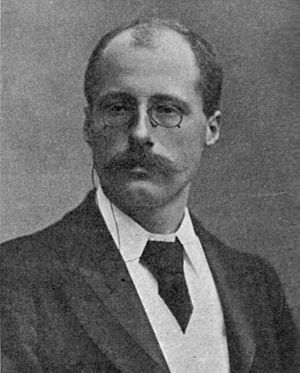G. W. Steevens facts for kids
George Warrington Steevens (born December 10, 1869 – died January 15, 1900) was a British journalist and writer. He was known for his clear writing style and his exciting reports from different parts of the world.
Contents
Early Life and Education
George Steevens was born in Sydenham, England. He went to the City of London School and later studied at Balliol College, Oxford. He also spent some time at Cambridge, where he helped edit a weekly magazine.
A Career in Journalism
George Steevens became a journalist and quickly became known for his sharp observations and lively writing. He worked for newspapers like the National Observer and The Pall Mall Gazette. From 1896, he joined the Daily Mail, a major newspaper.
Reporting from War Zones
Steevens became a very famous war correspondent, which means he reported directly from battlefields. He traveled to many places to cover important events. His reports were so good that they were later published in books.
Some of his well-known books include:
- Monologues of the Dead (1895)
- The Land of the Dollar (1897), about America
- With the Conquering Turk (1897)
- With Kitchener to Khartum, which described his time with British forces during the Mahdist War in the Sudan
- The Tragedy of Dreyfus
- In India (1899), a series of articles about India
His fame as a war correspondent was later overshadowed by the daring escape of young Churchill from a prison in Pretoria.
Reporting the Second Boer War
In 1899, the Daily Mail sent Steevens to South Africa to report on the Second Boer War. He found himself caught in the siege of Ladysmith, a town surrounded by enemy forces.
During this difficult time, Steevens helped keep spirits up with his clever and sometimes dark jokes. He wrote for a local newspaper called Ladysmith Lyre. For example, he humorously described death by disease or starvation as "a strange sideway out of Ladysmith."
Sadly, George Steevens died from enteric fever, also known as typhoid, on January 15, 1900. This was just six weeks before British forces arrived to free Ladysmith.


